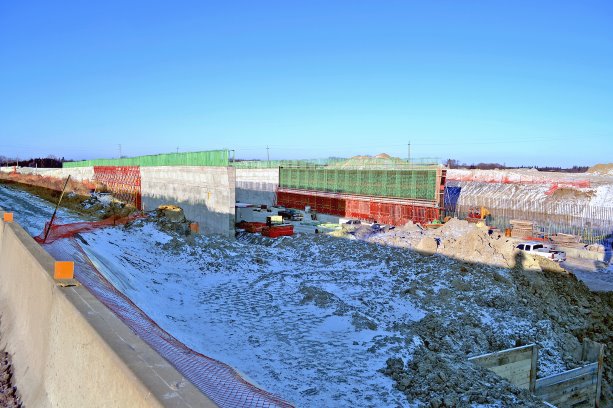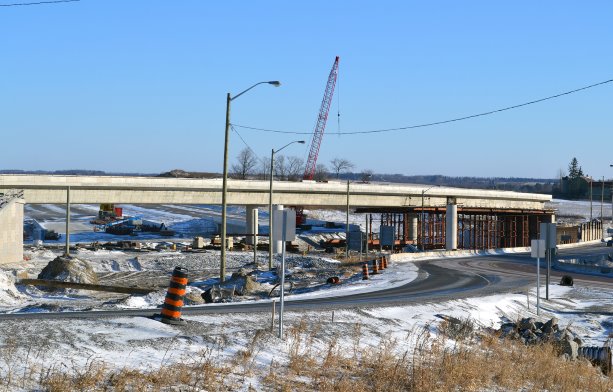Many lessons have been learned since the provincial government’s sale of the 407 into private hands — lessons that are being applied to the toll road’s east extension.
So says a recent report by Michael Fenn on Unlocking Ontario’s Advantages: Building new infrastructure on the foundation of existing public assets. Commissioned by the Residential and Civil Construction Alliance of Ontario, the report provides suggestions and examples of how government assets can be properly managed or "unlocked" to build and finance new infrastructure.
A section of Fenn’s report describes the 407 as the "elephant in the room" and discusses the events of the sale and what could have been done differently had the idea of road tolling not been so foreign in Ontario and had the deal been examined in more detail.
The 407 was built by the public sector with preliminary construction beginning in the 1980s, cites the report. The central section was completed in 1997 for $1.5 billion.
By 1999, however, government priorities had shifted with a focus on balancing Ontario’s books, thus Premier Mike Harris decided to sell the highway.
"In the initial discussions about privatizing the 407, ministry officials were evidently very conscious of future provincial transportation considerations and skeptical about vehicle volumes of the 407, as a toll road," the report reads.
After an accerlated sale process, ‘407 International’ was the winning consortium who purchased it for $3.1 billion.
"For the moment, it looked like a major financial coup for government," writes Fenn.
But that would be short-lived.
"The 407 privatization deal surrendered control over the setting of toll rates, lent the power of the state to the unique revenue-collection requirements of the electronic toll-road, and paid scant attention to customer-service standards," Fenn continues.
The tolls then began to rise, outraging motorists. The incoming Liberal government of that time promised to change this and motorists’ overall dealings with the 407.
Over the years, the relationship between the owners and the government was strained, with the deal the government made called into question.
"A little over two years after the Ontario government celebrated getting $3.1 billion for the 407, a part interest in 407 ETR was sold for a price that suggested that the valuation had more than doubled from its recent price," Fenn states.
"Suddenly, even the most positive aspect of the 407 deal — a 100 per cent profit on book value — looked more like a case of selling the 407 at a ‘fire sale’ price to cover a budget shortfall in 1999."
However, the report notes attitudes did begin to shift as people showed they were in fact using the highway. Former premier Dalton McGuinty stated then, "That tells me that the people of Ontario are voting with their kilometers, with their cars in terms of just how committed they are to using this road."
As attitudes shifted, so too did the methods of the provincial government, which is shown in the 407 East deal.
"People now look on it (the highway) as a well-functioning asset," says Fenn.
"People need to understand the context of the time when those arrangements (of the sale) were being made. The message is really one of making sure that you get the terms and conditions that are reasonable under the circumstance. There’s a much better understanding of the risks now. There was some negotiation remorse. Going forward there are ways in which you can learn those lessons."
Highway 407 East will be built in two sections, eventually spanning from Brock Road in Pickering to Highway 35/115.
The first section, which is currently underway, runs from Brock Road to Harmony Road in Oshawa. A consortium called the 407 East Development Group will design, build, finance and maintain the first section of Highway 407 East for a 30-year period.
The contract was set at a fixed price of $1 billion in 2012 dollars and the section is slated for completion by late 2015. The province will own and control 407 East, regulating and setting the tolls.
For Fenn, this shows the government learned from the first deal, while also embracing the benefits of public-private partnerships (P3s).
"Arguably the terms for the east extension are different than the terms for the original deal. The way in which the revenues are treated, the right to set the rates, the obligations on the operator, those are different under this new arrangement and I think they reflect the benefit of experience," he says.
"It is an opportunity to have the kind of infrastructure that we need."












Recent Comments
comments for this post are closed